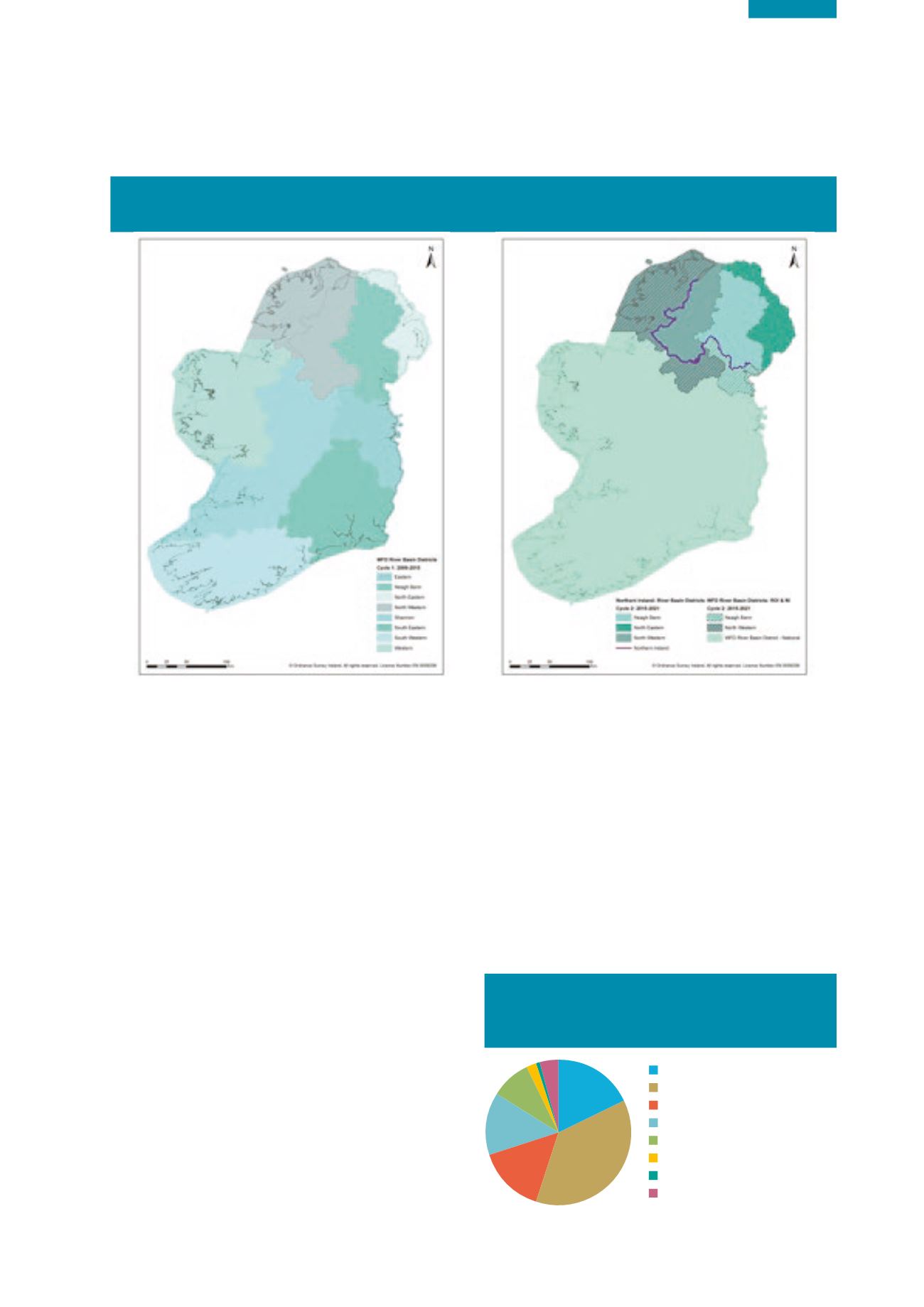

77
Chapter 5: Inland and Marine Waters
Tackling Diffuse Pollution
Diffuse Pollution
Diffuse pollution is pollution that arises from a variety
of non-point sources
.
Diffuse pollution occurs when potentially polluting
substances leach into surface waters and groundwater as
a result of rainfall, soil infiltration and surface runoff. The
source of this pollution, usually a result of recent or past
activity on land, is the widespread input of diverse types
of contaminants. Typical examples of diffuse pollution
include the use of fertiliser in agriculture and forestry,
pesticides from a wide range of land uses, contaminants
from roads and paved areas and atmospheric deposition of
contaminants arising from industry.
Agriculture
Farm inspections highlight key areas in need of
improvement to protect water quality.
In 2012, 53% of suspected cases of pollution in rivers
were attributed to agriculture (EPA, 2015b). Farm
inspections carried out by, or on behalf of, local authorities
under the good agricultural practices regulations have
fluctuated around 3500 per year between 2007 and 2014.
Among farms selected for inspection based on risk, over
30% each year were found to have breached the good
agricultural practice regulations. In comparison, a random
sample found breaches in between 18% and 21% over
this period. Of the breaches found in 2014, 52% were due
to the poor management of livestock manures and other
organic fertilisers (Figure 5.11), while 16% were due to
manure storage structural defects. Based on these figures,
there is clearly room for improvement in the management
of manures and organic fertilisers on a significant
proportion of farms. A further 18% of breaches were
simply due to poor management of clean waters. Many of
these issues can be solved by reasonably straightforward
changes in the management of farmyards.
Figure 5.11
Reasons for Breaches of The Good
Agricultural Practices Regulations in 2014
(Source: Agricultural Inspections Working Group)
Poor management of clean water
18%
Poor collection of organic manures
37%
Poor storage of organic manures
15%
Storage structural defects
16%
Stockpiling in a prohibited period
9%
Storage of silage bales
2%
Spreading of slurry breach
1%
Other
4%
Figure 5.10
Changes in the Number of River Basin Districts in the Republic of Ireland Between (a) Cycle 1 (2009‑2015)
and (b) Cycle 2 (2016‑2021) (Source: EPA)


















